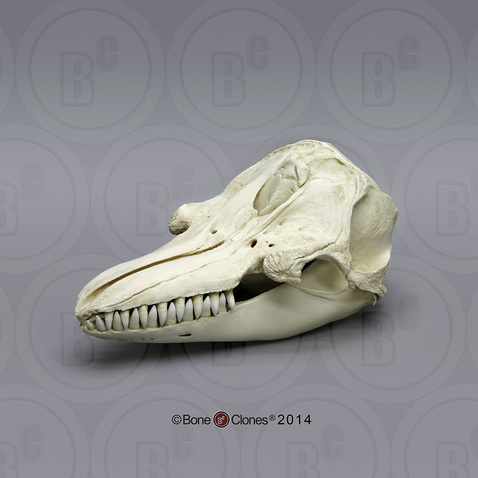Post by rock on May 25, 2019 1:15:10 GMT 5
Bull Walrus - Odobenus rosmarus
The walrus (Odobenus rosmarus) is a large flippered marine mammal with a discontinuous circumpolar distribution in the Arctic Ocean and sub-Arctic seas of the Northern Hemisphere. The walrus is the only living species in the Odobenidae family and Odobenus genus. It is subdivided into three subspecies: the Atlantic walrus (O. rosmarus rosmarus) which lives in the Atlantic Ocean, the Pacific walrus (O. rosmarus divergens) which lives in the Pacific Ocean, and O. rosmarus laptevi, which lives in the Laptev Sea. The walrus is easily recognized by its prominent tusks, whiskers and great bulk. Adult Pacific males can weigh more than 1,700 kilograms (3,700 lb) and, among pinnipeds, are exceeded in size only by the two species of elephant seals. It resides primarily in shallow oceanic shelf habitat, spending a significant proportion of its life on sea ice in pursuit of its preferred diet of benthic bivalve mollusks. It is a relatively long-lived, social animal and is considered a keystone species in Arctic marine ecosystems. The walrus has played a prominent role in the cultures of many indigenous Arctic peoples, who have hunted the walrus for its meat, fat, skin, tusks and bone. In the 19th and early 20th centuries, the walrus was the object of heavy commercial exploitation for blubber and ivory and its numbers declined rapidly. Its global population has since rebounded, though the Atlantic and Laptev populations remain fragmented and at historically depressed levels. While some outsized Pacific males can weigh as much as 2,000 kg (4,400 lb), most weigh between 800 and 1,680 kg (1,800 and 3,700 lb). The Atlantic subspecies weighs about 10–20% less than the Pacific subspecies. The Atlantic Walrus also tends to have relatively shorter tusks and somewhat more flattened snout. Females weigh about two-thirds as much, with the Atlantic females averaging 560 kg (1,200 lb), sometimes weighing as little as 400 kg (880 lbs), and the Pacific female averaging 794 kg (1,750 lb). Length ranges from 2.2 to 3.6 m (7.2–12 ft). It is the second largest pinniped, after the elephant seals. The walrus' body shape shares features with both sea lions (eared seals: Otariidae) and seals (true seals: Phocidae). As with otariids, it can turn its rear flippers forward and move on all fours; however, its swimming technique is more like that of true seals, relying less on flippers and more on sinuous whole body movements. Also like phocids, it lacks external ears.

False Killer Whale - Pseudorca crassidens
The False killer whale (Pseudorca crassidens) is a cetacean, and the third largest member of the oceanic dolphin family (Delphinidae). It lives in temperate and tropical waters throughout the world. As its name implies, the False killer whale shares characteristics, such as appearance, with the more widely known Orca (killer whale). Like the orca, the False killer whale attacks and kills other cetaceans. However, the two dolphin species are not closely related. The False killer whale appears to have a widespread, if small, presence in temperate and tropical oceanic waters. They have been sighted in fairly shallow waters such as the Mediterranean Sea and Red Sea as well as the Atlantic Ocean (from Scotland to Argentina), the Indian Ocean (in coastal regions and around the Lakshwadweep islands) and the Pacific Ocean (from the Sea of Japan to New Zealand and the tropical area of the eastern side), and also in Hawaii. The eastern tropical Pacific is estimated to have in excess of 40,000 individuals and is probably the largest population. The False killer whale is black with a grey throat and neck. It has a slender body with an elongated tapered head and 44 teeth. The dorsal fin is sickle-shaped and its flippers are narrow, short and pointed. The average size is around 4.9 m (16 ft). Females can reach a maximum known size 5.1 m (17 ft) in length and weigh 1,200 kg (2,600 lb), while the largest males can reach 6.1 m (20 ft) and weigh as much as 2,200 kg (4,900 lb).






